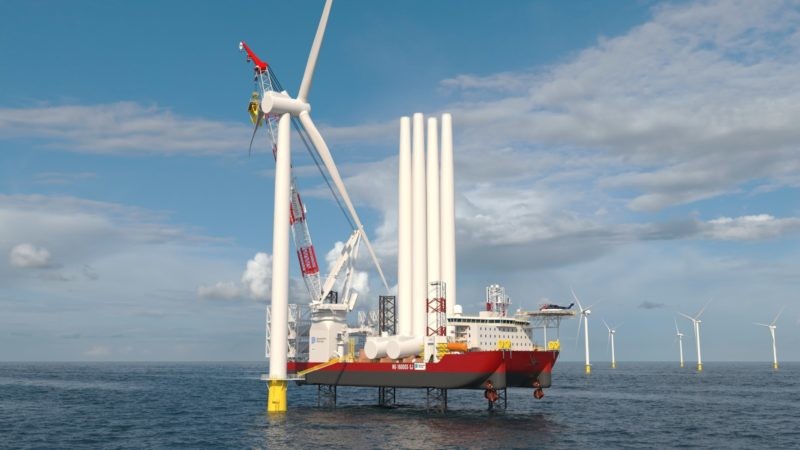The construction of offshore wind operations to the scale that’s needed for the U.S. to match the progress of other countries faces many challenges.
One is the need for supersized vessels. U.S.-based companies need to construct these vessels to comply with the Jones Act.
Capable of Meeting Demands
Wind turbine installation vessels (WTIVs) need to meet requirements in several key areas. In addition to the typical safety and other demands, WTIVs will need to have the capacity to handle the next generation of 12- to 14-megawatt turbines standing over 800 feet tall. The first U.S.-flag, Jones Act-compliant offshore wind turbine installation currently under contruction at Keppel AmFELS for Dominion Energy has the capacity to handle turbines that large. The 472’x184’x38’ vessel is scheduled to enter service by the end of 2023, according to Dominion Energy. The overall project cost, excluding financing costs, is estimated to be around $500 million. There is expected to be a greater demand for these vessels as the demand for offshore wind in the U.S. increases.
In the next decade, the U.S. is expected to increase offshore wind capacity by several gigawatts — possibly more depending on potential offshore wind on the West Coast.
Jones Act Compliance
WTIVs will also need to comply with the Jones Act. Among other requirements in the Act, the new offshore wind installation vessels will need to be U.S. built, U.S. owned and U.S. flagged. Currently, WTIVs available to meet these demands are foreign-flagged and do not meet Jones Act requirements. Wind developers using these WTIVs will need to employ U.S. flagged "feeder" vessels to carry turbine components to offshore work sites. Thus, the U.S. will need to ramp up production and develop its own fleet of WTIVs for greater installation capacity and efficiency.
Ports and WTIVs
Because of their size and construction, WTIVs may have additional requirements when in port. These requirements — which could be seen as an obstacle for ports — actually pose an opportunity for even more jobs and advancements as a result of offshore wind. Additionally, there are opportunities for U.S. ports to upgrade or expand and become valuable staging areas for wind turbine installation.
Positive Outlook
While Jones Act requirements for vessels built in the U.S. may seem like an obstacle that could hinder offshore wind operations, it is actually a win for the maritime industry. These requirements provide an opportunity for U.S.-based shipyards and operators to begin building WTIVs. This new market represents an opportunity for growth, revenue, and jobs in the maritime industry.
As the energy industry shifts toward more offshore wind power, marine businesses need to be prepared for the demand created by wind. Companies have an opportunity to begin building vessels that have not previously been constructed in the U.S.




